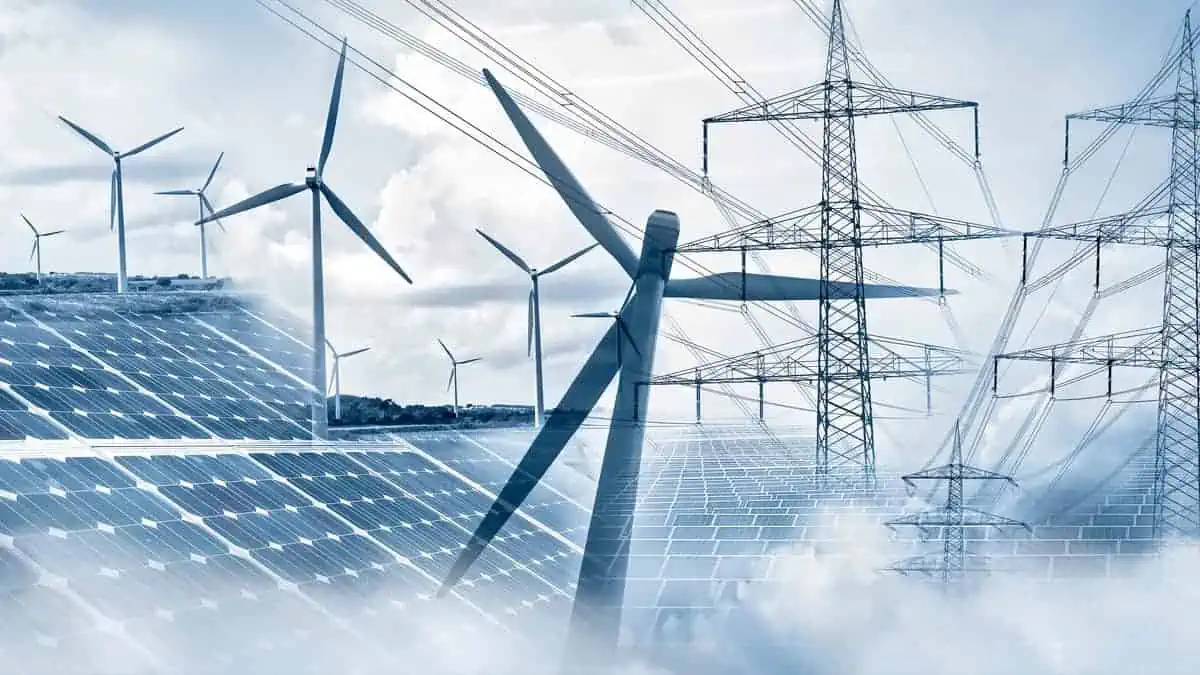In a groundbreaking shift, wind and solar electricity generation surpassed coal and nearly matched nuclear power in the United States during the first four months of 2023, the latest US Energy Information Administration (EIA) data shows.
The figures, outlined in the EIA’s “Electric Power Monthly” report, revealed a significant shift in the energy landscape as renewables gain traction and coal loses ground. The data also indicate a growing public preference for renewable energy sources.
Solar power leads the way with impressive growth
The renewable energy advocacy group, SUN DAY Campaign, analyzed the EIA’s data and found that solar energy enjoyed the most substantial growth among all energy sources during the first third of 2023.
Solar power generation increased by 10.24% compared to the same period in 2022, outpacing all other sources.
A significant contributing factor to this growth was the expansion of small-scale solar photovoltaic (PV) systems, including rooftop installations, which witnessed a remarkable increase of 24.88%. It also contributed nearly one-third (32.33%) of the total solar production during this period.
The combination of utility-scale and small-scale solar PV and utility-scale solar thermal contributed to 5.05% of the US’s total electrical output during the first four months of 2023.
Wind energy shows steady progress
Wind energy continued its impressive growth trajectory during the first four months of 2023, with a year-on-year increase of 1.97% in electricity generated from wind sources. This surge highlights the rising prominence of wind power as a key contributor in the renewable energy sector, according to data from the US Energy Information Administration (EIA).
During this period, wind energy accounted for a significant 12.85% of the total electricity generated in the United States, further solidifying its role in the nation’s energy landscape.
Notably, the steady upward trend in wind power generation reflects the increasing adoption of wind turbines and the ongoing expansion of wind farms across the country.
The growth in wind energy can be attributed to several factors, including technological advancements, improved turbine efficiency, and favorable government policies that incentivize renewable energy development.
Furthermore, the growing public awareness and support for clean energy alternatives have further propelled the expansion of wind power projects.
Combined wind and solar outshine coal and compete with nuclear
In an impressive milestone for renewable energy, wind, and solar power together contributed 17.91% of the total US electrical output during the first third of 2023.
This figure surpassed the contribution of coal, which stood at 14.98%, and came close to the share of nuclear power at 19.17%. Remarkably, these results demonstrate the increasing importance of renewable energy sources in meeting the nation’s electricity needs.
Renewable energy’s overall impact on electrical generation
When including other renewable energy sources like biomass, geothermal, and hydropower, the total contribution to the US electrical generation reaches 25.73%.
Remarkably, this figure represents a slight increase from the previous year’s figure of 25.35%.
It is also worth noting that the overall growth in renewable energy was achieved despite a 14% decline in hydropower output due to drought conditions, particularly in the country’s Western region.
Coal faces a steep decline; nuclear power remains stable
Coal’s downward trajectory in the energy sector continued during the first third of 2023, with a year-over-year decline of 28.4% in electricity generation.
On the other hand, nuclear power remained relatively stable, experiencing a negligible change of 0.1%.
Natural gas, another significant energy source, witnessed growth of 9.9% during the same period.
Renewable energy gains public support
The SUN DAY Campaign’s executive director, Ken Bossong, highlighted the record-breaking performance of renewable energy sources and expressed optimism about their continued growth.
“The mix of all renewables continues to set new records and will very possibly surpass 25% for the year.”
Ken Bossong, SUN DAY Campaign’s executive director
The results of a recent survey conducted by the Pew Research Center align with the upward trend of renewable energy in the United States. The survey, released today, reveals that 67% of US adults prioritize renewable energy development over increasing fossil fuel production.
Nevertheless, 31% of the American population currently advocates completely eliminating fossil fuels. In comparison, an additional 32% believe that the United States should eventually shift away from fossil fuels but consider the nation unready for such a transition at the moment. In contrast, 35% of those surveyed expressed that the US should continue utilizing fossil fuels indefinitely to fulfill its energy requirements.
Despite these divergent viewpoints, the survey reveals that most Americans support advancing renewable energy sources. It instills optimism for ongoing advancements in transitioning towards a power generation system that is more sustainable and environmentally friendly.
See Also:
- Wind and Solar Energy hit a record 12% of global electricity in 2022
- Wind, solar, and battery cover 82% of 2023 utility-scale power capacity in US
- The world’s first offshore floating wind-solar pilot launched in China
- Singapore examines hybrid solar, tidal, wind & wave energy systems
- heatbridge hybrid wind, solar, & open storage facility opens in Oregon
The support for renewable energy sources signifies a growing recognition of the need to reduce dependence on fossil fuels, which are finite resources and contribute to environmental degradation through greenhouse gas emissions. By endorsing the advancement of renewable energy technologies, Americans are demonstrating their commitment to mitigating climate change, promoting cleaner air quality, and fostering a more sustainable future.






